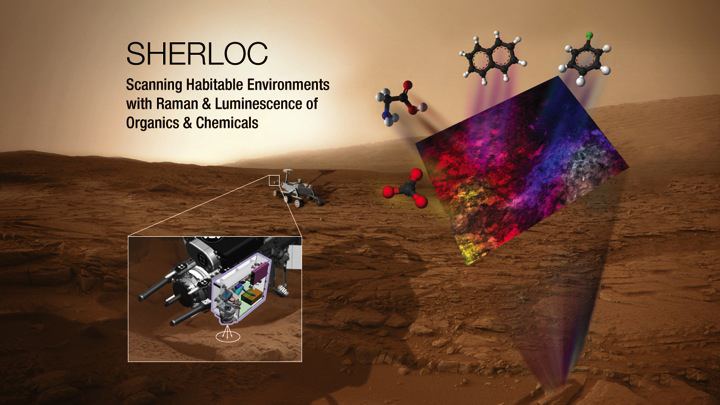 | ||
Scanning Habitable Environments with Raman and Luminescence for Organics and Chemicals (SHERLOC) is an ultraviolet Raman spectrometer that uses fine-scale imaging and an ultraviolet (UV) laser to determine fine-scale mineralogy and detect organic compounds designed for the Mars 2020 rover mission. It is constructed at the Jet Propulsion Laboratory with major subsystems being delivered from Malin Space Science Systems and Los Alamos National Laboratory. The Principal Investigator is Luther Beegle, the Deputy Principal Investigator is Rohit Bhartia.
SHERLOC will be mounted on the robotic arm of the Mars 2020 rover. It consists of both imaging and spectroscopic elements. It has two imaging components consisting of heritage hardware form the MSL MAHLI instrument. One is a built to print re-flight that can generate color images over multiple scales. The other acts as the mechanism that allows the instrument to get a contextual image of a sample and to autofocus the laser spot for the spectroscopic part of the SHERLOC investigation.
For Spectroscopy, it utilizes a NeCu laser to generate UV photons (248.6 nm) which can generate characteristic Raman and fluorescence photons from a scientifically interesting sample. The DUV laser is co-boresighted to a context imager and integrated into an autofocusing/scanning optical system that allows us to correlate spectral signatures to surface textures, morphology and visible features. The context imager has a spatial resolution of 30 µm and currently is designed to operate in the 400-500 nm wavelength range.
